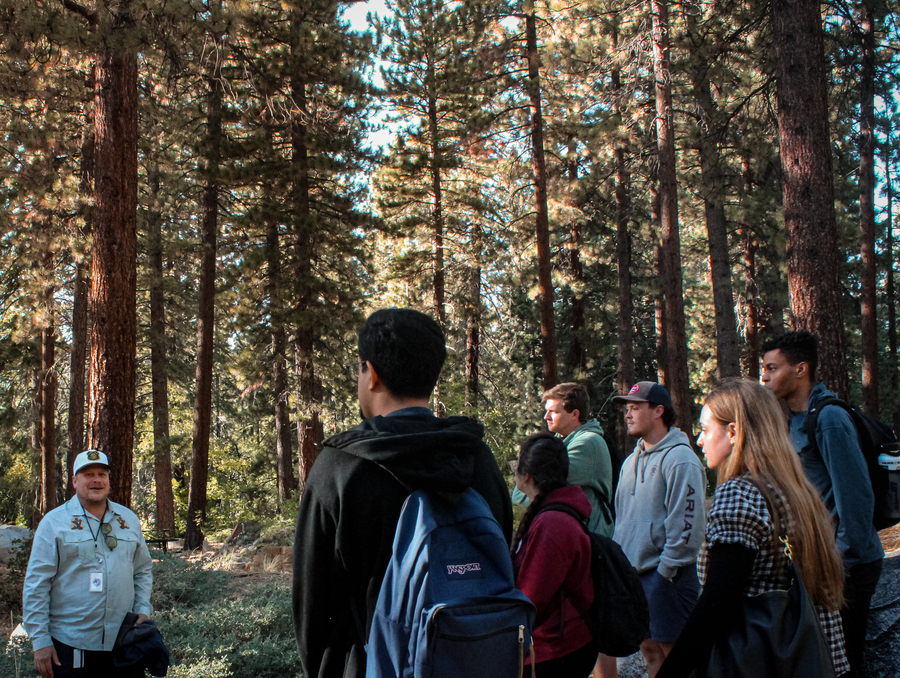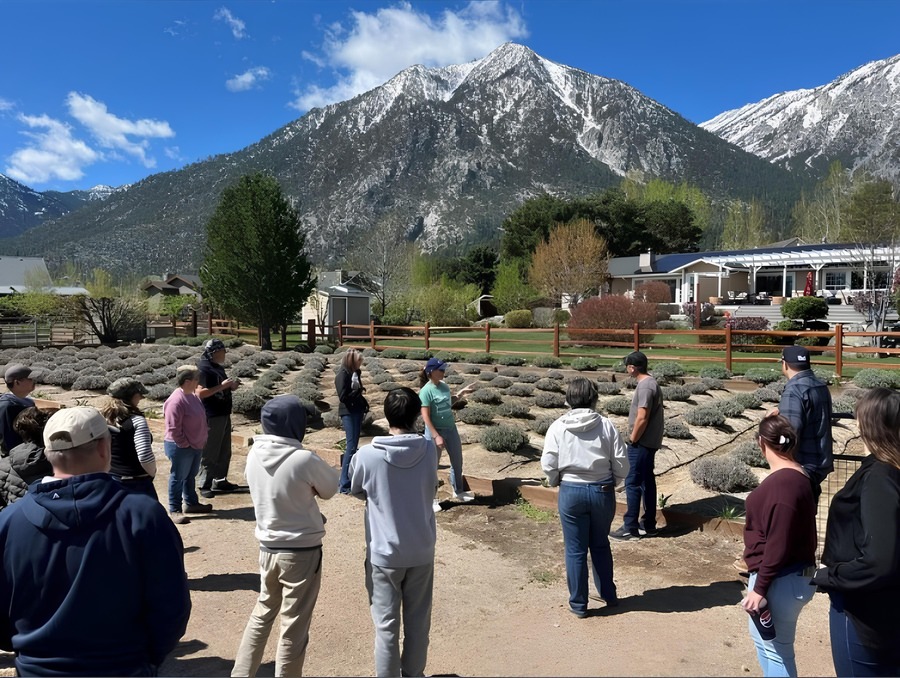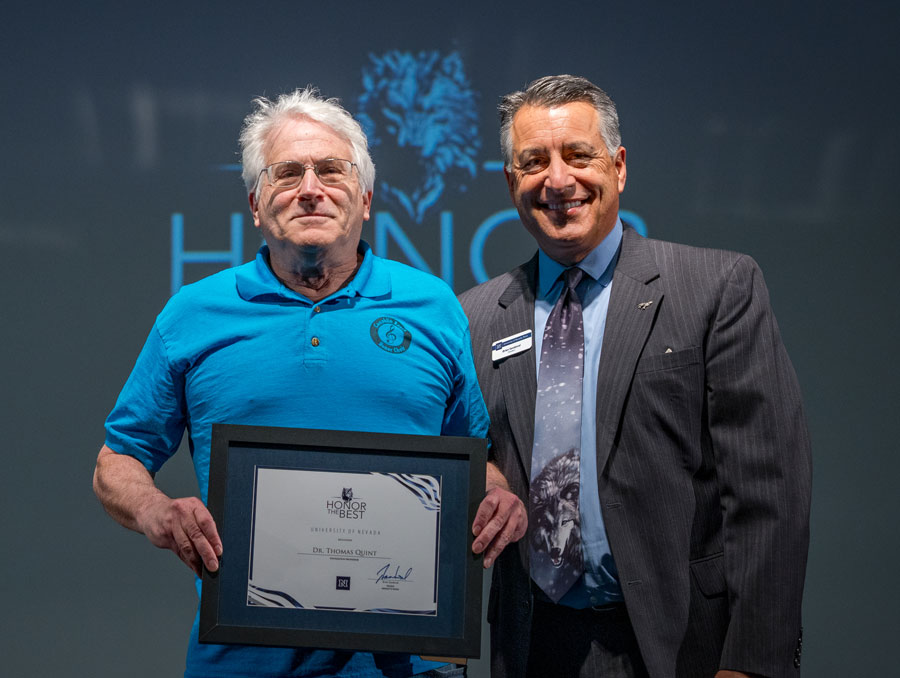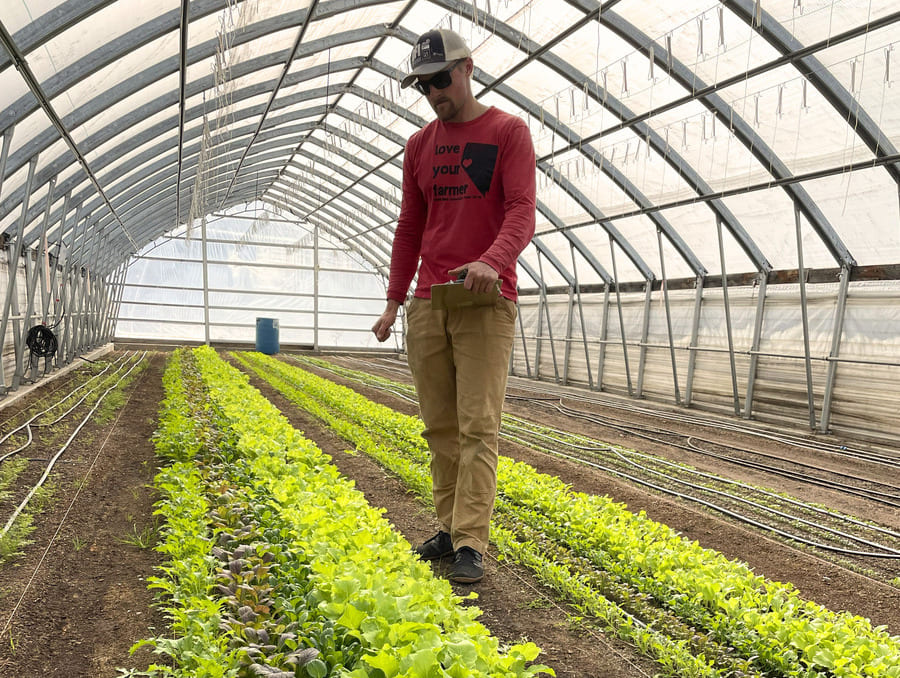For the first time, every plant species in the state of Nevada can be found in a single list. Published last month, “Nevada Vascular Plants: An Annotated Checklist of the State’s Botanical Diversity” can be used by land managers, botanists, researchers and plant lovers across the Silver State.
Botanist Arnold “Jerry” Tiehm ’74 (wildlife management), M.S. ’78 (botany), a curator in the University of Nevada, Reno’s Museum of Natural History herbarium, and his colleague Jan Nachlinger ’85 M.S. (botany), a longtime volunteer in the herbarium, published the checklist in a 284-page book. Nachlinger and Tiehm have worked together for over 40 years.
“I think that it might open people's eyes to the diversity of the state,” Nachlinger said. “I think it will surprise a lot of people that grew up here. You have to admit, it's very subtle, unless you get out a lot and spend a lot of time in the mountains.”
Most states in the west have not only checklists, but floras for the plants in their states, which comprise identification keys and often include information about where a plant can be found.
“I realized early on that Nevada was a big black hole, that nothing had been compiled,” Tiehm said. “The only flora written for the state was in 1925. We keep finding things new to the state, we found things new to science, and I've always felt that it would be nice to put all this information in one place.”
When a plant is newly described to the scientific community, a single specimen is chosen to represent the species and is known as a “type.” So far, Tiehm has had 29 specimens he personally collected selected for types. He previously published a book on Nevada types which documented where the newly described plants were located, and which herbaria housed the types.
Tiehm compiled a majority of the list and decided what plants belong in Nevada, while Nachlinger provided edits and figured out how to order the list of 3,647 plants. Nachlinger’s photography is also featured in the book. The authors note that because botanical discoveries continue, the book will never be fully complete. In fact, some plants have been identified in the state in the months since its publication, and they intend to create a version of the checklist that can be updated.
“He is the botanical expert, and I've kind of been his sidekick for all of this time,” Nachlinger said.
They have experienced much of what Nevada’s wide-open landscapes have to offer, including some of the less fun parts of remote fieldwork. The two recalled a time they were camping while searching for plants in northeastern Nevada when it began to snow early in the morning.
“We ended up packing up and heading to Twin Falls, and we went to a movie to pass the time, pass the bad weather,” Nachlinger recalled.
“It was two days before we could get back out there because of the snow,” Tiehm added.
Despite the sometimes-harsh environment, Nachlinger said Nevada’s vast swaths of public land make it a great place to study the natural world.
“What's wonderful about Nevada is, a lot of it is public land,” Nachlinger said. “It works really well for somebody that wants to explore and study the state, whether you're a zoologist, a geologist or a botanist.”
Tiehm and Nachlinger agreed that the biggest challenge in compiling the book was ensuring that each plant in the book was in the right place. Plants have scientific names, which scientists reference to ensure they are talking about the same plant, and common names. Some plants have more than one common name, which made compiling the book’s index a challenge. Nachlinger and Tiehm almost exclusively refer to a plant by its scientific name.
“There’s so much more to a scientific name than just the name,” Nachlinger said.
Scientific names, which use Latin words, provide information about the relationships between plants and whether they belong to the same family or genus.
“If people just get comfortable with a little bit of Latin, they can actually learn a lot more,” Nachlinger added.
Tiehm and Nachlinger are among the state’s most prolific plant experts and are well-respected by their fellow botanists. Eight plants have been named for Tiehm, and one has been named for Nachlinger.
“It's a thrill,” Tiehm said. “I mean, you're botanically immortal, and the name is always going to be applied to that plant.”
Nachlinger said Tiehm’s immense knowledge of plant life in the Silver State made him uniquely qualified to put together the checklist.
“I don't think anybody else could have done it,” she said.
Nachlinger asked Tiehm if he plans to put together a flora of the plants in Nevada.
“I think I’m going to become a geologist,” Tiehm joked.
“Nevada Vascular Plants: An Annotated Checklist of the State’s Botanical Diversity” is available for purchase online from BRIT Press.















